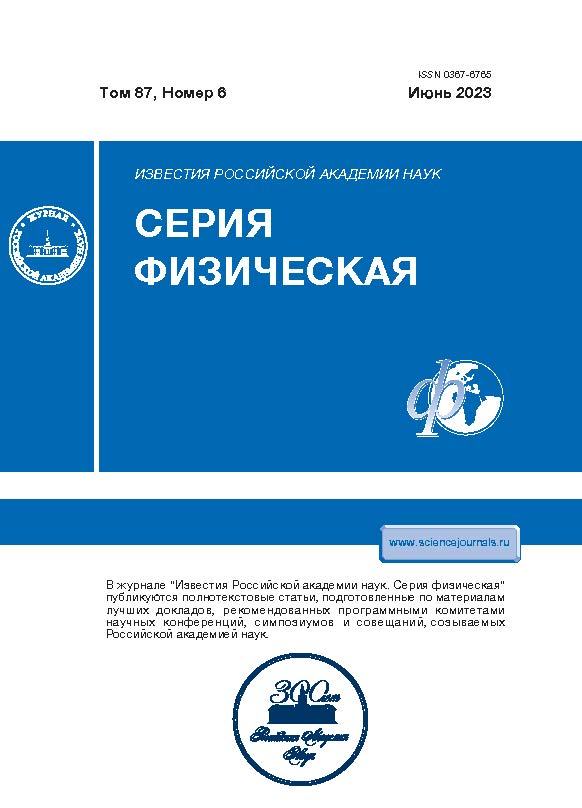Obtaining and research of the properties of magnetic-luminescent hybrid structures based on iron oxide (Fe3O4) with semiconductor shells
- Autores: Kafeeva D.A.1, Kurshanov D.A.1, Dubavik A.Y.1
-
Afiliações:
- ITMO University,
- Edição: Volume 87, Nº 6 (2023)
- Páginas: 801-806
- Seção: Articles
- URL: https://rjeid.com/0367-6765/article/view/654376
- DOI: https://doi.org/10.31857/S0367676523701399
- EDN: https://elibrary.ru/VKXGGK
- ID: 654376
Citar
Texto integral
Resumo
The high-temperature organic synthesis of hydrophobic superparamagnetic nanocomposites of the Fe3O4/ZnS and Fe3O4/ZnSe core–shell type is discussed. An analysis of the absorption, luminescence, magnetic circular dichroism (MCD) and morphology spectra of hydrophobic magnetoluminescent nanocomposites is presented. It is shown that nanocomposites have luminescent properties, and the growth of the shell on the Fe3O4 core retains the magnetic properties of the particles. An analysis of the MCD spectra shows that the magnetic field induces spin-dependent chiral magneto-optical activity. An estimate of the dependence of the g factor on the magnitude and sign of the external magnetic field demonstrates a change in the magnetization of the resulting nanocomposites relative to Fe3O4.
Sobre autores
D. Kafeeva
ITMO University,
Autor responsável pela correspondência
Email: kafeyeva@gmail.com
Russia, 197101, Saint Petersburg
D. Kurshanov
ITMO University,
Email: kafeyeva@gmail.com
Russia, 197101, Saint Petersburg
A. Dubavik
ITMO University,
Email: kafeyeva@gmail.com
Russia, 197101, Saint Petersburg
Bibliografia
- Tufani A., Qureshi A., Niazi J.H. // Mater. Sci. Engin. C. 2021. V. 118. Art. No. 111545.
- Dulińska–Litewka J., Łazarczyk A, Hałubiec P. et al. // Materials. 2019. V. 12. No. 4. Art. No. 617.
- Xie W., Guo Z., Gao F. et al. // Theranostics. 2018. V. 8. No. 12. P. 3284.
- Özgür M.E., Ulu A., Balcıoğlu S. et al. // Toxics. 2018. V. 6. No. 4. Art. No. 62.
- Ding L., Zhou P., Zhan H. et al. // Chemosphere. 2013. V. 92. No. 8. P. 892.
- Liu L., Jiang W., Yao L. et al. // J. Nanosci. Nanotech. 2014. V. 14. No. 7. P. 5047.
- Maqbool Q., Jung A., Won S. et al. // ACS Appl. Mater. Interfaces. 2021. V. 13. No. 45. P. 54301.
- Chen J., Hsu H.-S., Huang Y-H., Huang D.J. // Phys. Rev. B. 2018. V. 98. No. 8. Art. No. 085141.
- Fontijn W.F.J., van der Zaag P.J., Devillers M.A.C. et al. // Phys. Rev. B. 1997. V. 56. No. 9. Art. No. 5432.
- Gromova Y. A., Maslov V.G., Baranov M.A. et al. // J. Phys. Chem. C. 2018. V. 122. No. 21. P. 11491.
Arquivos suplementares














